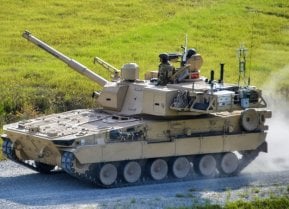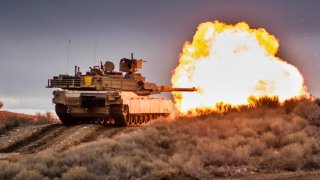M1 Abrams SEPv4: The New Tank the Army Had to Say No To
The U.S. Army has decided against developing the M1 Abrams SEPv4 variant, citing a report by the Army Science Board. This decision reflects concerns over the tank's adequacy for future warfare, with predictions it won't be dominant by 2040.
Summary: The U.S. Army has decided against developing the M1 Abrams SEPv4 variant, citing a report by the Army Science Board. This decision reflects concerns over the tank's adequacy for future warfare, with predictions it won't be dominant by 2040. The report highlighted the Abrams' diminishing advantages in mobility, firepower, and protection against evolving threats and recommended the development of fifth-generation armored vehicles. Meanwhile, the SEPv3 variant, which precedes SEPv4, incorporates advanced technologies like enhanced infrared detection and a powerful 120mm cannon but the search for a new fifth-generation MBT continues, balancing technological advancements against weight constraints.
The Abrams series of tanks has been in service with the U.S. Army for over four decades and is a critical component of the service’s armored corps. The tank’s latest M1A2 SEPv3 variant (System Enhancement Package version 3) is the latest member of the family, and it carries sophisticated technologies that set it apart from its predecessors.
A SEPv4 variant was scheduled to follow, but the Army announced the program’s cancellation this September. Considering the Abrams’ honorable legacy and decades of reliable service, it is surprising to see the Army turn away from the series’ next generation.
M1 Abrams SEPv4 Tank: What Happened?
Over the summer, the Army Science Board – the federally sanctioned independent group of experts that advises the Secretary of the Army—released a report explaining why the planned SEPv4 variant would not be adequate for future warfare. The study concluded that the Abrams tank would not be usable in operations after 2040 and recommended developing additional fifth-generation armored vehicles.
“Based on our findings, The M1 Abrams will not dominate the 2040 battlefield. All of the M1’s advantages in mobility, firepower, and protection are at risk,” the report said.
“The M1A2 SEP V3&4 upgrades will improve effectiveness but not restore dominance. Near transparency in all domains will significantly increase the lethality our forces will experience. China and Russia have studied our forces and doctrine and are fielding countermeasures. We will continue to have to fight outnumbered, exacerbated by a low MBT operational readiness rate and an aging fleet,” the Army Science Board report added.
What About the SEPv3 Variant?
While the SEPv4 variant will never enter service with the Army, the earlier SEPv3 model includes some of the best features that would have been included in the planned MBT. The latest Abrams design is equipped with an M256 120mm smoothbore cannon capable of firing M829A4 advanced kinetic energy and advanced multi-purpose rounds to defend armored vehicles. Additionally, the tank carries a 12.7mm machine gun, which is mounted coaxially with the primary gun.
The SEPv3 also includes enhanced forward-looking infrared to detect targets, as well as a new armor package and electronic warfare systems. A Honeywell AGT1500 gas turbine engine powers the SEPv3 variant, providing 1,500 horsepower. The new tanks also feature advanced power generation and distribution systems.
The Army’s Quest for a New Fifth-Generation MBT
The once-planned SEPv4 variant was to include even greater capabilities. While the incorporation of better technology is a good thing, the weight increase could be a hindrance for a main battle tank. Engineers must balance new features with weight constraints when designing a new fifth-generation MBT series.
About the Author: Maya Carlin
Maya Carlin, National Security Writer with The National Interest, is an analyst with the Center for Security Policy and a former Anna Sobol Levy Fellow at IDC Herzliya in Israel. She has by-lines in many publications, including The National Interest, Jerusalem Post, and Times of Israel. You can follow her on Twitter: @MayaCarlin. Email the author: [email protected].
Image: Shutterstock.


